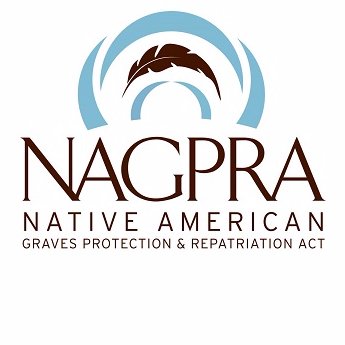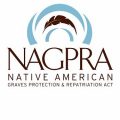
( – promoted by navajo)
After decades of struggles by Native American tribal governments and individual Indians, in 1990 Congress passed the Native American Graves Protection and Repatriation Act (NAGPRA). This act requires a number of institutions, such as museums, federal agencies, and universities, to inventory certain categories of human remains and associated funerary objects. Under NAGPRA, the inventory was to be completed by 1995.
Two decades after NAGPRA became law, the Government Accountability Office (GAO) has issued a report showing that many key federal agencies are not yet in compliance with the law. The GAO concludes:
Despite the fact that key federal agencies have now had almost 20 years to comply with the act, they still have not fully complied.
The GAO report looks at eight federal agencies: the Bureau of Indian Affairs, Bureau of Land Management (BLM) , National Park Service (NPS), U.S. Fish and Wildlife Service (FWS), U.S. Forest Service, U.S. Army Corps of Engineers, and the Tennessee Valley Authority (TVA), and the Bureau of Reclamation. These agencies have millions of American Indian artifacts and human remains in their possession. The GAO report:
http://www.gao.gov/new.items/d…
According to agency data and our survey results, a total of 55 percent of human remains and 68 percent of associated funerary objects have been repatriated as of September 30, 2009.
Human remains held by the eight agencies included 5,246 held by the Forest Service, 4,053 by NPS, 1,565 by BLM, 550 by the Bureau of Reclamation, and 464 by the BIA. According to the report:
Of the eight key agencies we reviewed, the Forest Service and FWS had the lowest repatriation rates for human remains among the key agencies with published notices of inventory completion.
The Forest Service had repatriated only 15% of its human remains and the FWS had repatriated less than 50%. On the other hand, the Bureau of Reclamation had repatriated all of theirs and the BIA had repatriated 95%.
Lack of repatriation in some cases is due to multiple competing repatriation requests and the federal agency has been unable to clearly determine which requesting party is most appropriate. The report provides this example:
For example, in a case involving human remains that represent approximately 1,400 individuals removed from the Tonto National Forest in Arizona, there is a disagreement among some of the culturally affiliated tribes over the place and manner of the final disposition of the human remains. According to the Forest Service, because this involves differing cultural views among culturally affiliated tribes, it is leaving the matter to the tribes to resolve. As a result, the repatriation cannot proceed until the disagreement is resolved.
There are also differences in the reburial policies among the agencies. For example, the Bureau of Reclamation does not allow reburial on the land which it manages and thus the tribes must find appropriate reburial sites.
Repatriation involves not only human remains, but also unassociated funerary objects, sacred objects, and objects of cultural patrimony. By the end of fiscal year 2009, federal agencies had published 78 notices of intent to repatriate in the Federal Register covering 34,234 objects. Of these the BIA has 24,200 and NPS has 3,352.
While NAGPRA has provided the Indian Nations with some power over their ancestors and important cultural artifacts, this power is diluted by the inability of the federal agencies to comply with it. According to the GAO, this lack of compliance is not due to racism or anti-Indian sentiment, but due to a lack of funding and a lack of knowledgeable staff to implement it.

Leave a Reply